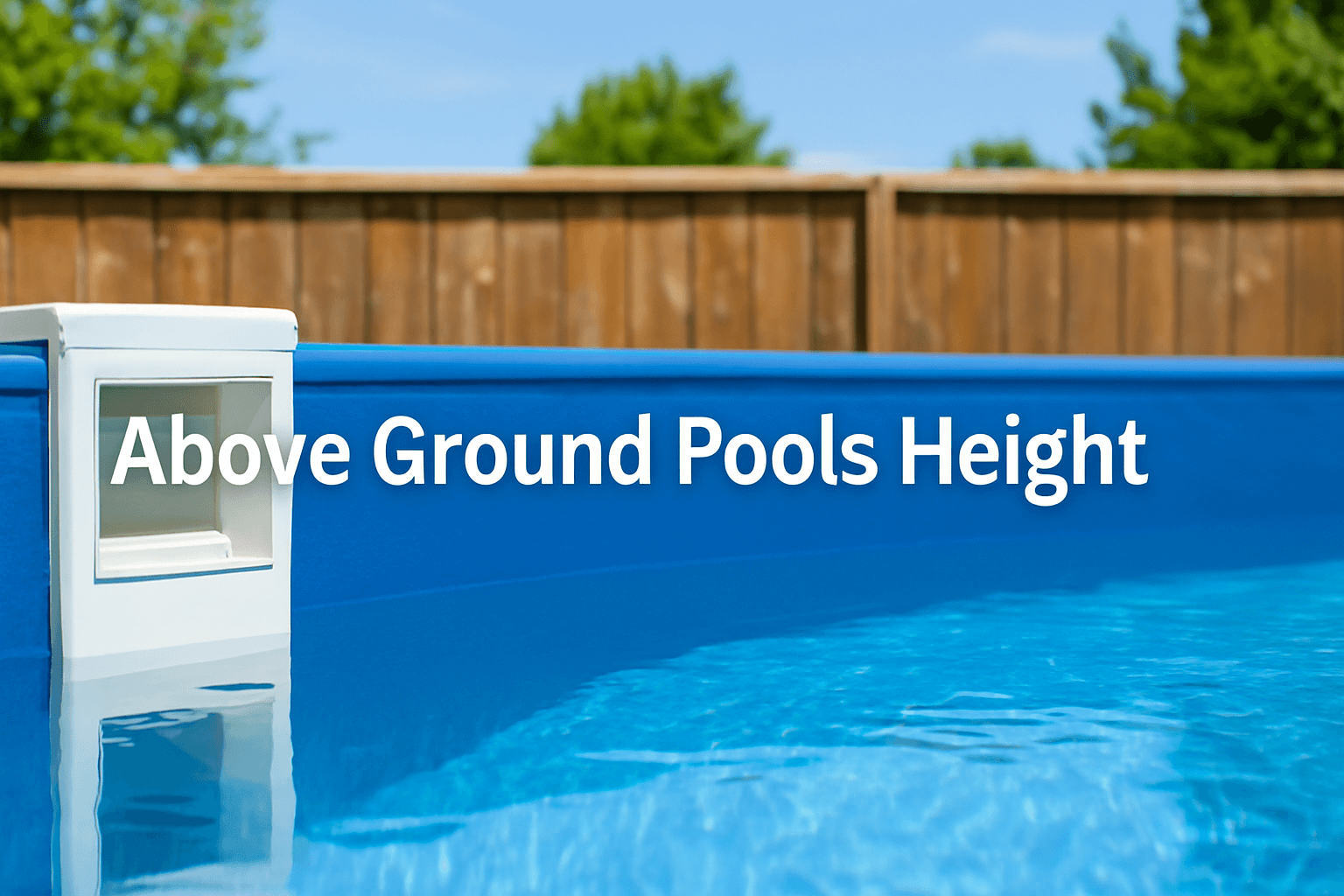
Above Ground Pools Height
Not sure if your pool should be knee-deep or belly-button level? The sweet spot for most UK families is 1.2 to 1.5 metres — deep enough to splash, shallow enough to supervise (and yes, easy to reach with your above ground pool skimmer too).
Here’s how to find the perfect pool height without getting in over your head.
Above Ground Pools Height: Understanding Your Options and Water Depth
Common Standard Heights for Above Ground Pools
48-Inch Pools: The most common and affordable height
If you're dipping your toes into pool ownership, this is where most families start. A 48-inch (1.2m) pool is easy to set up, budget-friendly, and perfect for younger kids or casual use.
Think weekend splashing, pool noodles, and inflatable flamingos — nothing too deep or dramatic.
Provides a typical water depth of around 3.5 feet
With the water sitting just below the top edge (to let the skimmer do its thing), you’ll get around 3.5 feet of depth. That’s enough for kids to wade safely and adults to cool off without needing to swim.
52-Inch Pools: The popular mid-range option
Now we're stepping up. A 52-inch (1.32m) pool is the sweet spot for many families — deep enough to float about comfortably, but not too tricky to manage.
Perfect if your kids are growing or you want more space for water games.
Provides a typical water depth of around 4 feet
You’ll enjoy around 4 feet of water depth. Just right for inflatable loungers, floating goals, and the occasional grown-up pretending they’re on holiday.

54-Inch Pools: The deepest and most durable option
Looking for something more permanent? The 54-inch (1.37m) models are typically the sturdiest and deepest you’ll find.
These are built to last — and built for families who want the full summer pool experience.
Provides a typical water depth of around 4.5 feet
At around 4.5 feet of water, these pools are great for older kids and adults who want to swim, play volleyball, or just float around without hitting the bottom every two seconds.
Understanding Usable Water Depth vs. Pool Wall Height
The water line is always a few inches below the top of the wall
Here’s something first-time pool buyers often miss — the water never fills all the way to the top. Why? Because your skimmer needs breathing room.
That’s where it collects debris, and it can’t work properly if the water’s overflowing.
The thickness of the pool base affects usable depth
If you’re laying your pool on foam or a sand base — which is common in the UK to protect the liner — that raises the floor slightly.
Result? You lose a bit of swimming depth. It’s not a dealbreaker, just something to factor in before you dive (not literally).

How Height Impacts Your Pool Experience and Safety
Matching Height to Intended Use and Swimmer Demographics
Shorter pools are ideal for smaller children and wading
If your kids are little — think under 6 — a shorter pool is often the safest bet.
You can stand nearby and reach them easily, and there’s less risk of them getting out of their depth. Plus, no need for a ladder.
Taller pools are better for adult swimming and water games
On the other hand, if your pool is for the whole family — especially older children and teens — go taller.
You’ll have space for proper swimming, floating loungers, and even a bit of water volleyball. Bonus: taller walls give a bit more privacy from the neighbours!
The Role of Height in Pool Safety
A taller wall can be a barrier for toddlers
One of the sneaky safety perks of taller pools? They’re harder for little ones to climb into unsupervised.
That extra height can be just enough to give parents peace of mind — especially if you add a ladder that can be removed or locked.
The "No Diving" Rule: All above-ground pools are too shallow for safe diving
Let’s be clear: no matter how deep your above ground pool is, it’s never safe to dive in.
Even the 54-inch models aren’t built for diving. It might be tempting (especially for daredevil teens), but a quick leap can turn into a long trip to A&E. Stick to cannonballs.

Considerations for Installation and Maintenance
Taller pools are more labour-intensive to install
Bigger pools take a bit more muscle to get up and running.
You’ll need a flatter, more level surface, and more time to assemble. If your garden’s got a slope or uneven patches, be ready for some groundwork first.
Higher walls can make cleaning and maintenance more challenging
You’ll definitely feel the height when it’s time to clean.
Skimming leaves or vacuuming can be awkward without a longer pole, and climbing in to clean means a ladder every time. Pro tip: get an automatic pool cleaner if you go tall.
Deeper pools require more water, chemicals, and filtration time
Here’s the trade-off for that glorious water depth — you’ll need more of everything.
More water, more chlorine, and more time for your pump to filter the lot. That means slightly higher running costs, but many families find it’s worth it for the added fun.
Have you checked out our other posts?
Where Is Skimmer On Above Ground Pool?
Why Are Above Ground Pools Round?
Above Ground Pool Alternatives
Above Ground Pool Ladder Alternatives



Leave a comment